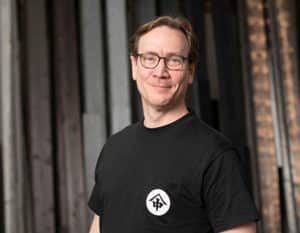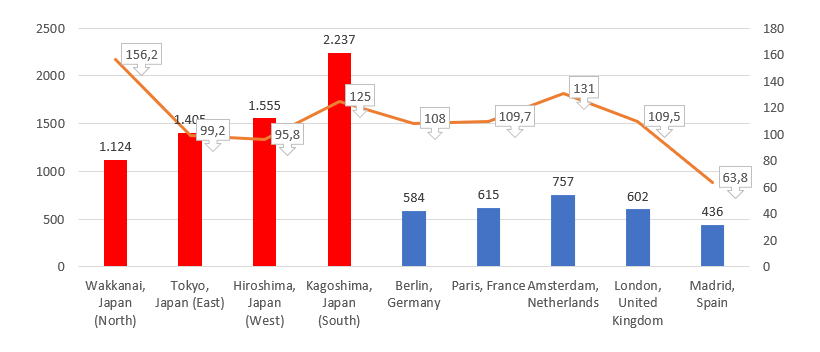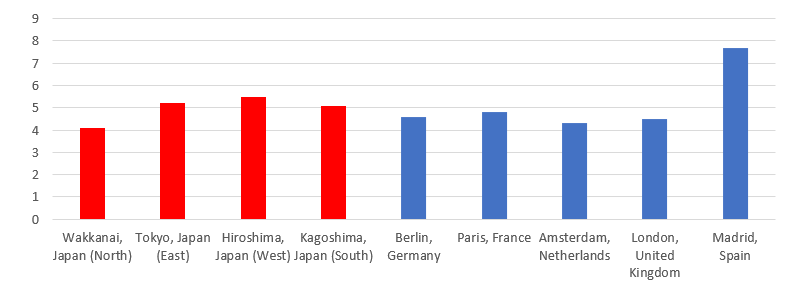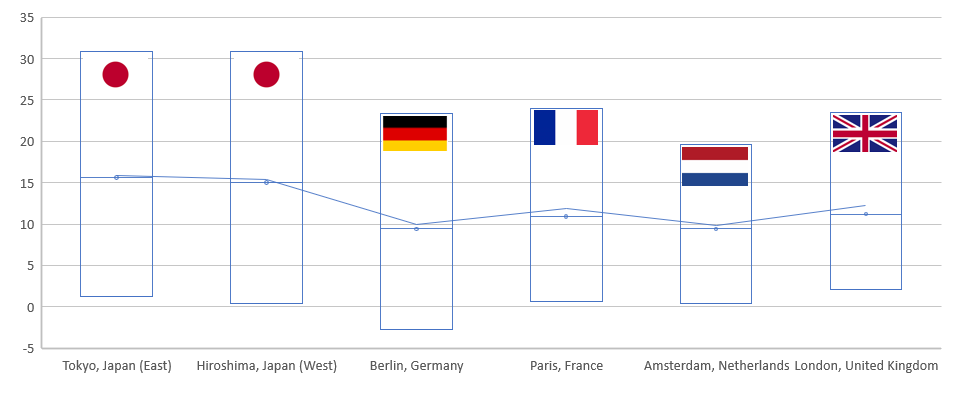Why Japan's climate makes Yakisugi particularly valuable for Europe
Why Japan's climate makes Yakisugi particularly valuable for Europe

Martin Gottschlich
Why Japan's Climate Makes Yakisugi Particularly Valuable for Central Europe
Finding the right building material for a specific climate can be a challenge. This becomes particularly apparent when considering the climatic differences between countries like Japan and regions such as Central Europe. A building material that has become increasingly interesting in Europe in recent years is Yakisugi made from Japanese cypress (Sugi).
But what makes this technique, its origin, and particularly the material so special for European conditions? Let’s take a closer look.

Climatic Fundamentals and Comparison between Japan and Europe
Japan stretches from north to south and encompasses several climate zones. Generally, however, one can speak of a distinctly humid climate prevailing in most parts of the country.
- Summer: the summer months in Japan are characterised by very high temperatures and high humidity. The southwest monsoon brings moist air masses from the Pacific, leading to heavy rainfall, especially during the rainy season (Tsuyu) in June and July.
- Winter: While the coastal areas experience mild winters, the mountain regions of Japan can experience heavy snowfall, especially on the west coast, which is affected by the winter northwest monsoon.
- Typhoons: From July to October, parts of Japan are regularly affected by typhoons, bringing extreme winds and heavy rainfall.



Why Yakisugi cladding is ideal for Europe
Why should a material developed for Japan’s humid climate be so advantageous in Central Europe? Simply put, because it has been tested in the harshest environment. If Yakisugi boards can endure the humid and climatically extreme environment of Japan, they can certainly withstand the weather conditions in Central Europe. It’s comparable to a product that has been tested under the most extreme conditions – if it works there, it’s likely to work anywhere.
- The Sugi grows in extreme conditions: thereby defying even the harshest circumstances, this explains the high natural durability, the great dimensional stability, and the harder, thicker annual rings (latewood) of Sugi compared to, for example, larch or spruce.
- Natural UV Protection: The charring of the wood serves as a natural UV blocker. The dark, charred surface absorbs UV rays and prevents them from penetrating deeper into the wood, thus protecting the wood from the harmful influence of the sun. This is particularly advantageous in regions like Southern Europe, where sun exposure is intense.
- Water and Salt Resistance: One of the biggest challenges in coastal regions is the high humidity, coupled with the salt from the sea. The charred surface of Yakisugi is naturally water-repellent. This prevents moisture from penetrating the wood, thereby minimising the risk of rot and mould. Additionally, the charred layer forms a barrier that prevents salt particles from entering the wood and destroying it. Moreover, the heat treatment changes the wood’s cell structure, creating a harder and more robust surface. This makes the wood more resistant to physical damage that could be caused by sand, wind, or sea salt in coastal regions.
- Natural Protection Against Pests: Charred wood is unattractive to many insects and pests that could infest wood. In regions where wood pests are common, Yakisugi thus offers additional protection.
- Durability and Low Maintenance: Unlike conventionally treated wood or other materials, Yakisugi requires minimal maintenance to retain its functional state. This is particularly advantageous in regions where extreme weather conditions could increase maintenance efforts.
- Sustainability: Yakisugi offers an environmentally friendly option, without chemical wood protection and with minimal maintenance effort, making it ideal for ecological construction. The transport from Japan is carbon-neutral, entirely compensated by us through certificates.
- Aesthetic Versatility: The uniqueness of Yakisugi fits excellently with modern European architecture, which often represents a mix of tradition and modernity.

 EU (English)
EU (English) DE (Deutsch)
DE (Deutsch) FR (Français)
FR (Français) UK (English)
UK (English) US Website
US Website

